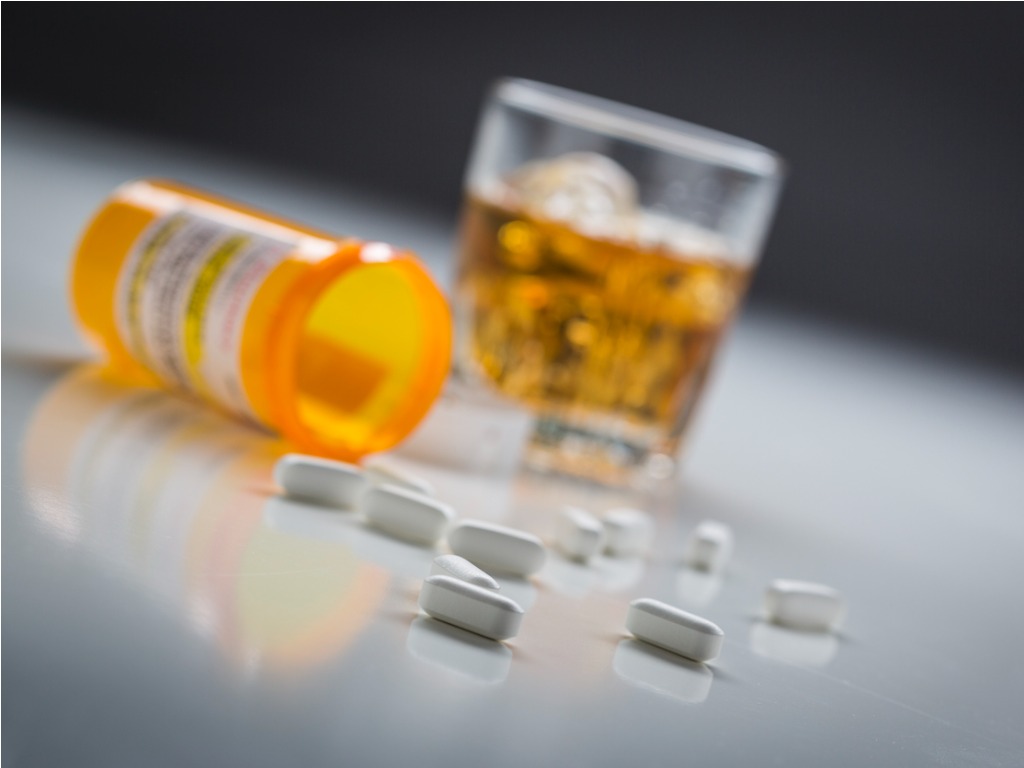Is Alcohol Dangerous?

The Bottom Line
Ethanol, found in alcoholic beverages, is safe for most adults in moderation. Excessive ethanol intake and consumption of other types of alcohol can be dangerous.

What are the types of alcohol?
There are several types of chemicals that are referred to as “alcohol”. The most common one is ethanol, which is found in beverages such as beer, liquor, and wine. Ethanol is also an ingredient in some mouthwashes, perfumes, and liquid medications. Another type of alcohol is isopropyl alcohol, which is found in many rubbing alcohol products as well as some hand sanitizer formulations. Consumption of both ethanol and isopropyl alcohol can cause intoxication and stomach irritation. Another dangerous type of alcohol is methanol, which is commonly found in windshield washer fluids, deicers, and gas line antifreeze. Consumption of methanol can lead to blindness and even death.
Is alcohol a drug?
Alcohol is a drug. This is because ethanol and other alcohols are chemicals that act on the brain and other parts of the body in a similar way to medications. Since alcohol is a drug, it can cause unwanted symptoms, poisoning, or even death when consumed in larger amounts.
What medicines are dangerous to take with alcohol?
There are some medications that should not be taken with alcohol. The most common types of medications to be avoided are opioid pain medications, sedatives, muscle relaxants, and other drugs that can cause drowsiness or confusion. When these medications are taken with alcohol, severe symptoms, including abnormal breathing and excessive drowsiness, can occur. Alcohol can also interact with other prescription and over-the-counter medications. It can increase the effects of the blood thinner warfarin (Coumadin®) in the human body, and can also increase the risk of stomach bleeding in people who take non-steroidal anti-inflammatory medications (NSAIDS), like ibuprofen. Taking large amounts of acetaminophen (Tylenol®) with alcohol can cause liver damage. Finally, alcohol can interact with some medications such as metronidazole (Flagyl®), causing flushing, vomiting, and abdominal pain when the medications are consumed at or near the same time. Check with your doctor, pharmacist, or poison control before drinking alcohol while on medication.
What is alcohol poisoning?
Alcohol poisoning occurs when an individual drinks develops unwanted signs and symptoms after drinking alcohol in excessive amounts in a relatively short period of time. Signs and symptoms of alcohol poisoning include vomiting, confusion, passing out, and excessive sleepiness. In some cases, people with alcohol poisoning can stop breathing or choke on their vomit. Because alcohol poisoning can be life-threatening, call 911 or seek medical attention immediately if someone you know exhibits signs or symptoms of this condition.
Is alcohol poisonous to a child?
Children who drink alcoholic beverages, perfume, or hand sanitizer may develop alcohol poisoning. Consumption of alcohol by children can cause drowsiness, confusion, and an unsteady gait. In some cases, ethanol consumption can cause low blood sugar and seizures in children.
Is there a treatment for alcohol poisoning?
There is no specific antidote for alcohol poisoning or alcohol intoxication. Treatment of alcohol poisoning includes administration of intravenous fluids, medications for nausea, and careful monitoring of the affected individual’s level of consciousness and breathing patterns. Individuals with severe alcohol poisoning, including children, may require admission to an intensive care unit (ICU). Because alcohol poisoning is a potentially life-threatening condition and can result in falls and other injuries, it’s important to never leave a person affected by alcohol poisoning alone. If a person with alcohol poisoning vomits, turn the individual to his or her side to reduce the risk of choking.
What do I do if someone has alcohol poisoning?
If someone develops signs or symptoms of alcohol poisoning, call 911 or seek medical care immediately. If someone experiences adverse or unwanted effects after drinking alcohol, use the webPOISONCONTROL® online tool for guidance or call Poison Control at 1-800-222-1222. Both options are free, confidential, and available 24 hours a day.
Maryann Amirshahi, PharmD, MD, MPH, PhD
Medical Toxicologist
Poisoned?
Call 1-800-222-1222 or
Prevention Tips
- Keep alcoholic drinks and other alcohol-based products away from children.
- Never leave someone with alcohol poisoning alone.
- Talk to your doctor or pharmacist about potential interactions between alcohol and any medications you are taking.
This Really Happened
Case 1. A 24-year-old woman presented to an Emergency Department (ED) with flushing, abdominal pain and vomiting after drinking wine at dinner. Three days prior, she started an antibiotic called Flagyl for a vaginal infection. At the ED, her symptoms were found to be caused by an interaction between the alcohol and the Flagyl. She was given a dose of anti-nausea medicine and was told not to drink alcohol while taking the medication. She finished her course of antibiotics without any additional problems.
Case 2. A 3-year-old girl took a sip of a vodka cocktail that was on her parent’s coffee table. She didn’t like the taste and spat most of it out. Her mother called Poison Control, where a specialist recommended giving a snack and closely monitoring the child at home. The girl was drowsy and went to bed early that night but had no other problems.
Case 3. A 19-year-old college freshman went to a party where he consumed a large amount of ethanol. His friends found him on the grass outside of the fraternity house. He was cold, covered in vomit, and was having trouble breathing. The other students called 911. He was taken to the hospital where he was warmed and put on a ventilator to support his breathing. He was diagnosed with pneumonia that likely occurred as a result of choking on his vomit. After spending a few days in the intensive care unit, he was discharged home and made a full recovery.
For More Information
Centers for Disease Control and Prevention. Alcohol poisoning deaths.
Mayo Clinic. Alcohol poisoning.
National Institutes on Alcohol Abuse and Alcoholism. Understanding the dangers of alcohol overdose.
References
McClain CJ et al. Potentiation of acetaminophen hepatotoxicity. JAMA 1980;244:251-253.
Weathermon R, Crabb DW. Alcohol and medication interactions. Alcohol Res Health 1999;23:40-45.
Poisoned?
Call 1-800-222-1222 or
Prevention Tips
- Keep alcoholic drinks and other alcohol-based products away from children.
- Never leave someone with alcohol poisoning alone.
- Talk to your doctor or pharmacist about potential interactions between alcohol and any medications you are taking.
This Really Happened
Case 1. A 24-year-old woman presented to an Emergency Department (ED) with flushing, abdominal pain and vomiting after drinking wine at dinner. Three days prior, she started an antibiotic called Flagyl for a vaginal infection. At the ED, her symptoms were found to be caused by an interaction between the alcohol and the Flagyl. She was given a dose of anti-nausea medicine and was told not to drink alcohol while taking the medication. She finished her course of antibiotics without any additional problems.
Case 2. A 3-year-old girl took a sip of a vodka cocktail that was on her parent’s coffee table. She didn’t like the taste and spat most of it out. Her mother called Poison Control, where a specialist recommended giving a snack and closely monitoring the child at home. The girl was drowsy and went to bed early that night but had no other problems.
Case 3. A 19-year-old college freshman went to a party where he consumed a large amount of ethanol. His friends found him on the grass outside of the fraternity house. He was cold, covered in vomit, and was having trouble breathing. The other students called 911. He was taken to the hospital where he was warmed and put on a ventilator to support his breathing. He was diagnosed with pneumonia that likely occurred as a result of choking on his vomit. After spending a few days in the intensive care unit, he was discharged home and made a full recovery.
